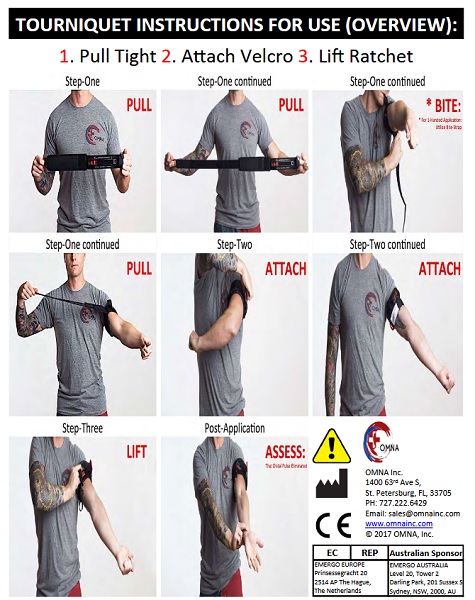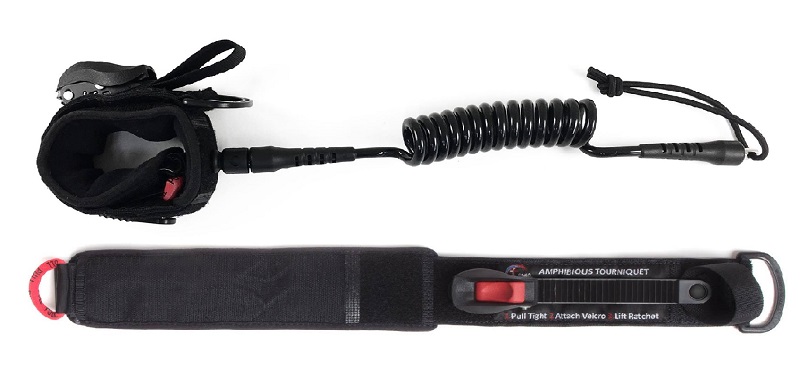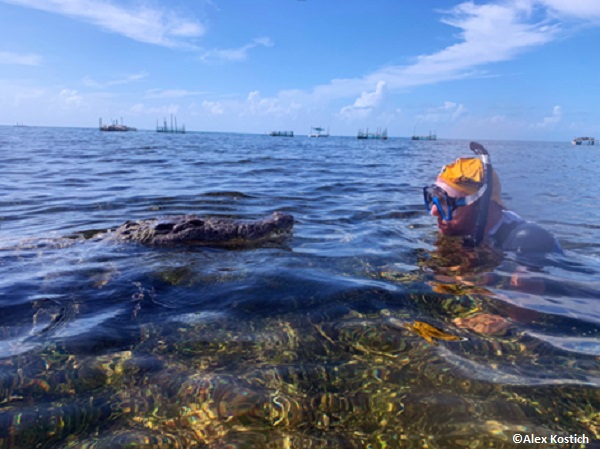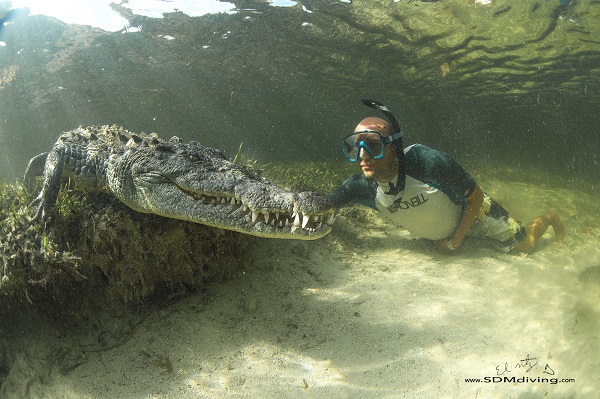A surf leash tourniquet that could save your life after a shark attack (or other life-threatening injury) is now on the market.
The OMNA leash is the brainchild of surfer, diver and former Recon Marine, Carson Henderson.
While between rotations in the Middle East, Carson and several friends went surfing in northern Iraq. The group hired a boat to take them across the mouth of a river in order to reach a good place to surf. However, the river was known to be home to both sharks and alligators.
![]()
“We surfed until dusk, and when we arrived back at the river shore the boats were gone, and we had to get in a tight group and paddle back as fast as possible,” Henderson said. “No one was hurt that night, but it got me thinking, because it was two hours to get to a trauma center from where we were, and we didn’t have a real TQ (tourniquet).”
A 2009 study by the United States Army Institute of Surgical Research found there are “consistent lifesaving benefits and low risk of emergency tourniquets to stop bleeding in major limb trauma.”
“Seventy-five percent of improvised tourniquets fail, according to a study conducted in 2006 at the Baghdad combat surgical hospital,” Henderson said. “Therefore, it is imperative that a person have a real TQ with them at all times.”
Henderson said the OMNA tourniquet product line, which is also available in an amphibious form for divers, is being incorporated into Surfing Western Australia’s training and curriculum. In addition, the government of Western Australia is set to endorse the tourniquets once the Therapeutic Goods Administration (FDA equivalent) approves the products.
The threat of shark attacks cause concern for many surfers, swimmers and divers. While the odds of being bitten or attacked by a shark are slim, it does happen. When it does happen, the need for first-aid is crucial.
![]()
A prime example occurred in June of 2016 in Western Australia. Surfer Ben Gerring lost his leg just above the knee to a great white shark.
“Ben died from hypovolemic shock, which occurs when you lose 1/5 or more of your blood. Essentially, the heart no longer has enough blood to pump to the body,” said Henderson. “His brother, Rick Gerring, said the rescuers tried to use the leash cord [as a tourniquet], but it didn’t work well.”
Rick Gerring is now an OMNA distributor in Western Australia. The OMNA Amphibious Tourniquet was tested at Tampa-Premier Vein using Doppler ultrasound study and showed 100% arterial blood flow occlusion on both the Brachial Artery and Femoral Artery.
While standard surf leashes have been used to slow bleeding, they were never designed to be tourniquets.
“During the Doppler tests, I attempted to use a leash cord as a tourniquet, which failed miserably,” Carson said. “I tied the cord in a knot to bind on itself and wrapped as much as I could around my leg, while maintaining tension and could not get full occlusion.”

The OMNA tourniquets appears relatively easy to use and can even be operated with one hand in about 7 moves.
While the odds of being bitten or attacked by a shark are slim, it does happen. In those rare occurrences, the OMNA Amphibious Tourniquet could help save lives.
OMNA Amphibious Tourniquets’ can be found at omnainc.com for under $50.



